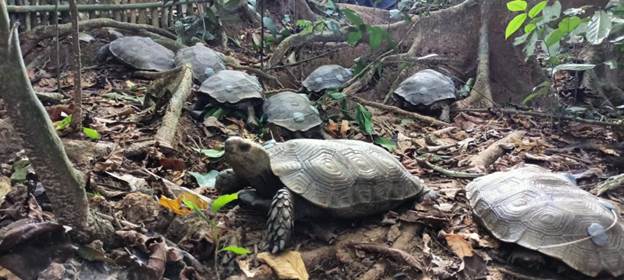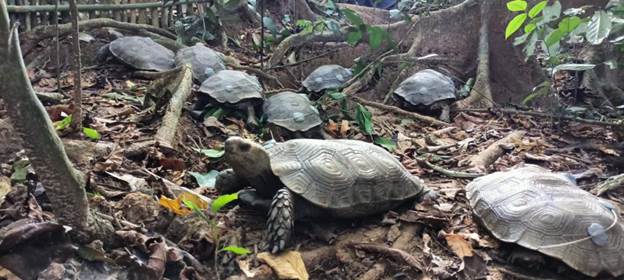Description

Copyright infringement not intended
Context: Ten captive-bred Asian Giant Tortoise (Manouria emys) juveniles were released into a protected area of Nagaland.
.jpg)
Details:
- The Asian Giant Tortoise is listed as ‘critically endangered’ under the International Union for Conservation of Nature Red List of Threatened Species.
- They are found in Bangladesh, India, Indonesia, and Malaysia and other places.
- CITES :Appendix II, Indian Wildlife (Protection) Act of 1972 : Schedule IV
- Soft release is a process of gradually releasing captive-raised species into the wild. The method helps the species to develop site fidelity among released individuals and eventually develop the habit to live in the vicinity of the release closure.
- With 110 hatchlings and juveniles from 13 adults, the Nagaland Zoological Park has the highest number of Asian Giant Tortoise. The juveniles were born in 2018 and have an average weight of 2.4 kilogrammes.
- The rewilding attempt also aims at collecting scientific information and developing a better rewilding strategy. The exercise will produce the first-ever baseline information for developing the long-term monitoring and eventual release strategy for species supplementation on the regional scale.
- Over-exploitation and unsustainable use for consumption by local communities resulted in the species being pushed to the brink of extinction.
- Intanki National Park is also known as the Ntangki National Park, which was established by British administrators in the year 1923.
Tortoises and Turtles:
- India is home to 29 freshwater turtles and tortoise species of the 356 turtle species recognised worldwide and around 80 per cent of them are threatened, according to a 2020 study published in journal Reptile and Amphibians conservation and Natural History.
- In India, keeping indigenous turtles as pets is prohibited under the wildlife protection act.But the foreign breeds are not restricted and are kept as pets in many families across India.
.jpg)
|
DIFFERENCE
|
|
Turtle
|
Tortoise
|
|
Most turtles are primarily water-dwelling reptiles
|
Tortoises are land-dwelling reptiles
|
|
Turtles are usually omnivores
|
Tortoises are primarily herbivores
|
|
Turtles generally have lighter shells on their backs
|
Tortoises have much heavier and robust shells
|
|
Not all turtles are Tortoises
|
All tortoises are turtles, as they belong to the order Testudines
|
|
Turtles usually have a shorter life span from 20-40 years
|
Tortoises usually have a long life from 80-150 years
|
https://www.downtoearth.org.in/news/wildlife-biodiversity/10-asian-giant-tortoises-released-into-nagaland-protected-area-for-rewilding-86675












